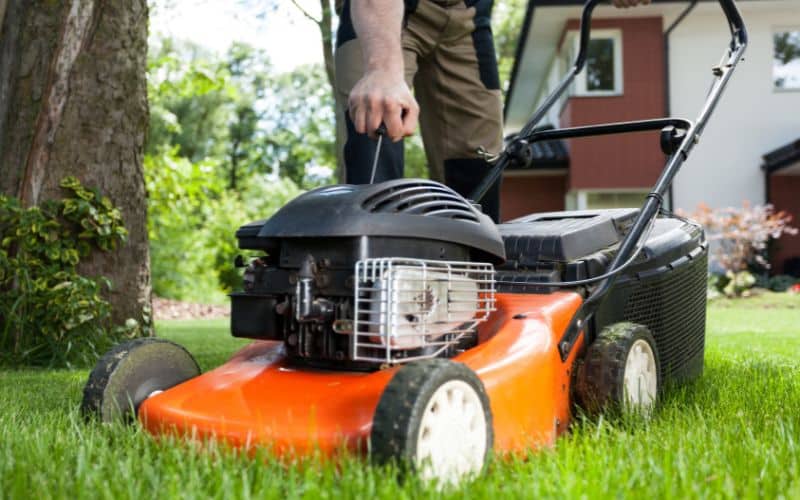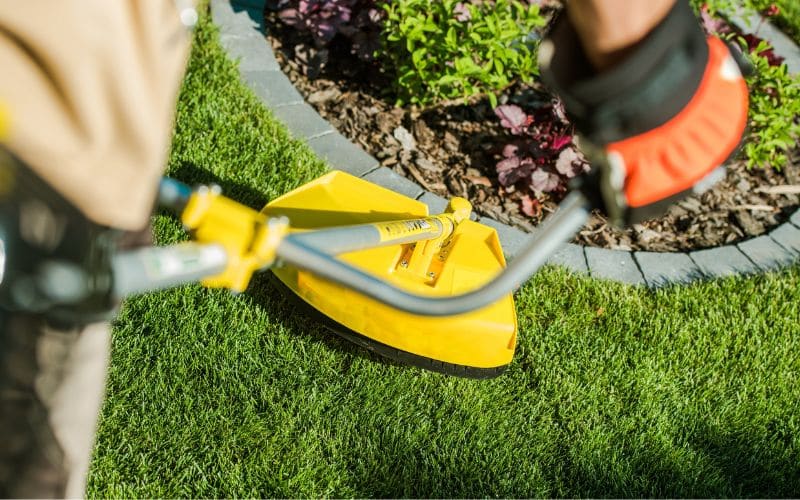
Every homeowner dreams of a lush, green lawn that’s the envy of the neighbourhood. Achieving this dream requires a bit more than just watering and mowing. It involves understanding the basic lawn care practices and using the right tools. Let’s dive into the essentials of lawn care and how you can transform your lawn into a verdant oasis.
Why is Basic Lawn Care Important for Every Homeowner?
Lawn care is more than an aesthetic pursuit. A well-maintained lawn contributes to your home’s curb appeal, increases property value, and creates a welcoming environment for family activities and social gatherings. Moreover, a healthy lawn is beneficial to the environment, absorbing carbon dioxide, releasing oxygen, and providing a habitat for various creatures.
How Often Should You Mow Your Lawn for Optimal Growth?
Mowing is a fundamental aspect of lawn care. The frequency of mowing depends on the type of grass, the season, and the desired lawn height. As a rule of thumb, never remove more than one-third of the grass blade at a time. This practice keeps your grass healthy and prevents the buildup of thatch. Depending on the growing season, you may need to mow your lawn once a week or once every two weeks.
What Role Does Water Play in Lawn Care and Maintenance?
Water is vital for the health and growth of your lawn. However, watering your lawn requires more than just turning on the sprinkler. The amount of water your lawn needs depends on the type of grass, the soil, and the climate. Most lawns need about 1 to 1.5 inches of water per week, including rainfall. It’s best to water your lawn in the early morning to minimize evaporation.

How to Choose the Right Lawn Mower for Your Landscape?
The right lawn mower can make your lawn care routine faster and more efficient. When choosing a lawn mower, consider the size of your lawn, the type of grass, and your physical ability. For small to medium-sized lawns, a walk-behind mower may be sufficient. For larger lawns, a riding mower or lawn tractor may be more appropriate. Remember to keep your mower blades sharp for a clean cut that promotes grass health.
Why is Aeration Essential for a Healthy Lawn?
Aeration involves perforating the soil with small holes to allow air, water, and nutrients to penetrate the grass roots. This helps the roots grow deeply and produce a stronger, more vigorous lawn. The main reason for aerating is to alleviate soil compaction, which can prevent proper circulation of air, water, and nutrients within the soil. Aeration is best done during the growing season when the grass can heal and fill in any open areas after soil plugs are removed.
What is the Best Way to Deal with Weeds in Your Lawn?
Weeds are a common challenge in lawn care. They compete with grass for nutrients, water, and sunlight. Regular mowing, proper watering, and correct fertilization can help prevent weed infestation. However, if weeds do appear, they can be removed manually or treated with a suitable weed killer. Remember to identify the type of weed before treatment, as different weeds require different control methods.
How to Use a Spreader for Fertilizer and Grass Seed?
A spreader ensures even distribution of fertilizer and grass seed across your lawn. There are different types of spreaders, including broadcast (or rotary) spreaders, drop spreaders, and hand-held spreaders. The choice of spreader depends on the size of your lawn and the type of product you’re applying. Always follow the manufacturer’s instructions when using a spreader to avoid over-application or under-application.

Why is a String Trimmer a Must-Have Lawn Care Tool?
A string trimmer, also known as a weed eater, is essential for areas that your lawn mower can’t reach. This includes areas around trees, garden beds, fences, and along the edges of your lawn. A string trimmer gives your lawn a neat, finished look.
How to Properly Rake and Dethatch Your Lawn?
Raking removes leaves and grass clippings from your lawn, allowing sunlight, water, and nutrients to reach the grass. Dethatching, on the other hand, involves removing the layer of dead grass and roots that accumulates on the soil surface. This layer, known as thatch, can prevent water and nutrients from reaching the soil if it becomes too thick. A regular garden rake can be used for small lawns, but for larger lawns or severe thatch problems, a dethatching rake or power dethatcher may be needed.
What Role Does Mulch Play in Lawn Care?
Mulch helps to retain soil moisture, suppress weeds, and improve soil health. Organic mulches, such as grass clippings or compost, can also provide nutrients to the grass. When mulching your lawn, apply a thin layer of mulch and avoid piling it up against the base of trees and shrubs, as this can lead to rot.
When Should You Consider Professional Lawn Care Services?
While many homeowners enjoy the satisfaction of caring for their own lawns, others may lack the time, tools, or physical ability to do so. In such cases, hiring a professional lawn care service can be a wise investment. These services can provide regular maintenance, as well as specialized treatments such as aeration, seeding, and pest control.
In conclusion, here are the key takeaways for successful lawn care:
- Regular mowing is essential, but remember to never remove more than one-third of the grass blade at a time.
- Water your lawn adequately, aiming for about 1 to 1.5 inches of water per week, including rainfall.
- Choose the right lawn mower for your landscape, considering the size of your lawn, the type of grass, and your physical ability.
- Aerate your lawn during the growing season to alleviate soil compaction and promote healthy root growth.
- Deal with weeds promptly and effectively, using the appropriate weed control methods.
- Use a spreader for even distribution of fertilizer and grass seed.
- A string trimmer is a must-have tool for reaching areas that your lawn mower can’t.
- Regularly rake and dethatch your lawn to allow sunlight, water, and nutrients to reach the grass.
- Use mulch to retain soil moisture, suppress weeds, and improve soil health.
- Consider professional lawn care services if you lack the time, tools, or physical ability to maintain your lawn.
Remember, a well-maintained lawn not only enhances your home’s curb appeal but also provides a space for outdoor enjoyment. Happy gardening!
Colin Macmillan is a seasoned entrepreneur and the CEO of Riverwood Landscape, a leading landscaping company based in Canada. He has been at the helm of the company since leaving high school, demonstrating his strong leadership skills and business acumen.
Colin’s expertise lies in various aspects of landscaping, including lawn care, interlocking, sod installation, and commercial maintenance. His hands-on approach and dedication to the craft have been instrumental in building Riverwood Landscape into a reputable brand.
One of his most notable achievements is the creation of a successful landscape franchise that services multiple locations. This accomplishment underscores his strategic thinking and ability to scale operations effectively.
Colin has also had the privilege of working with Guelph Hospital for landscaping and maintenance, a testament to the trust and reliability that his company has earned over the years.
His professional mission is to offer the best services and experiences for customers, a goal that he tirelessly pursues. Colin’s commitment to excellence and customer satisfaction continues to drive the growth and success of Riverwood Landscape.








